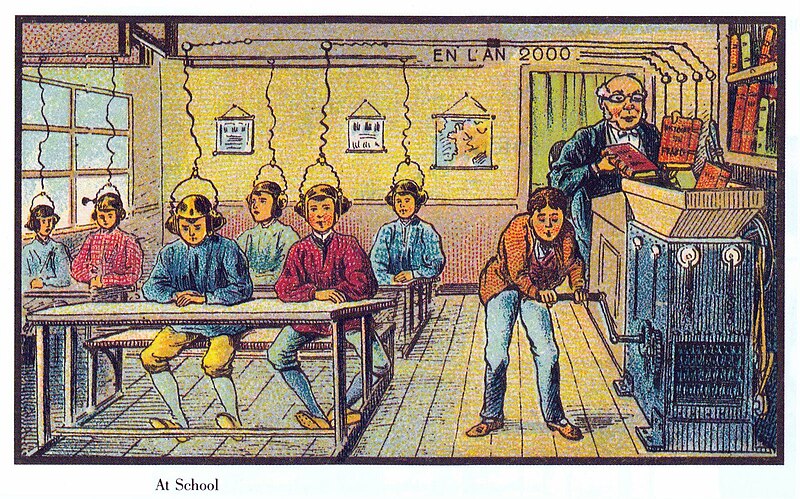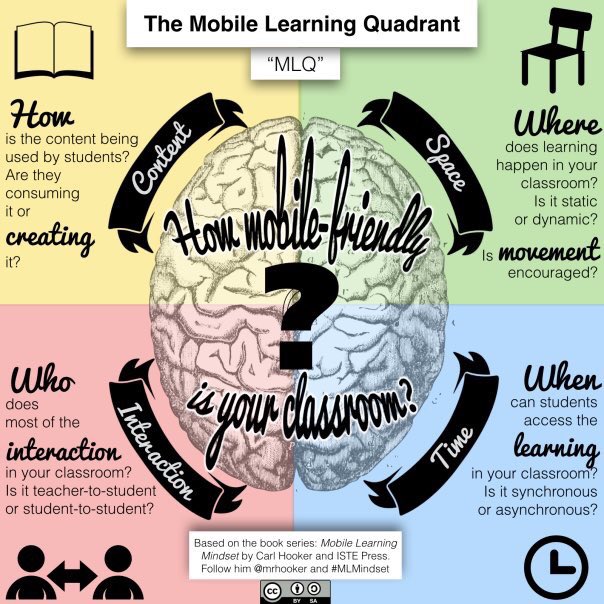Carl Hooker, Digital specialist in Eames, Texas was the day 2 keynote.
Carl started as a 1st grade teacher in 2001. Those students are now seniors in college, and WERE 21st Century learners.
How much has changed in the last 15 years, and what will education look like, 15 years from now? He shared the image on the right, a view of education in 2000, from the 1890's.
Looking at technology in 2001, and how it has changed since then. The iPhone, came out in 2007, and look at how far we've come...
Hooker ended with a story about the roll out of his 1:1 program, and a student who nearly died. A few weeks later, Ben posted videos about his experience.
Unfortunately, Ben died a few weeks later.
Buildings exist for the kids, not the adults!
Carl started as a 1st grade teacher in 2001. Those students are now seniors in college, and WERE 21st Century learners.
 |
| 1890's view of education in 2000 |
Looking at technology in 2001, and how it has changed since then. The iPhone, came out in 2007, and look at how far we've come...
When we change the way we communicate, we change society.-Clay Shirky
Hooker noted, I don't think this was what Shirky meant!
Hooker noted that students today think that they are good at multitasking...
While communication has evolved, instruction on new modes of communication like texting, posting, tweeting, commenting, livestreaming, snapchatting, etc. has not kept up!
Mobile Learning Quadrants:
 |
| via @eaparkins |
How:
- We are tweeting our own stories today, rather than waiting till the next day to learn news.
- We need to teach how to tell real from fake news
- Textbooks-static vs. OER (Instead of giving 100's of 1000's of $ to textbook companies, why not give 100's of 1000's of $ to teachers?!)
- What's more important, following directions or demonstrating learning of the content?
- Providing choice also improves quality
- Where does most of the content in your classroom come from? Hooker argues it should be a balance of teacher/student currated.
- How do we keep the look of curiosity and wonder in our students?
We need to be asking our kids to solve interesting problems...and we need to be ok if they get the answers wrong.
-Seth Godin
Who
- Is the interaction in your classroom teacher to student, student to student?
- Who owns the learning?
Where
- Where does the learning happen?
- Look at how the console radio was usurped by the transister radio, even though it didn't sound as good. They liked the personalized technology.
- A few years ago, Carl spent a day following a student around. Students made school board members sit in one of the desks they have to sit in for a meeting. Now they are getting new desks!
- Brain breaks every 20 minutes is important.
- "We ask our kids to stretch their thinking, we need to also stretch our own!"
When
- When do you learn and create best? Some were morning, some evening.
- In 1975, if you wanted to watch a specific show, you had to watch it in real time. Today, people watch shows anytime, anywhere.
- Today's student schedules are still in 1975 mode, but we have lots of tools that allow students to access learning anytime, anywhere.
- He shared the story of is aunt and how he was able to share
- When does learning take place in and out of your school?
Hooker ended with a story about the roll out of his 1:1 program, and a student who nearly died. A few weeks later, Ben posted videos about his experience.
Unfortunately, Ben died a few weeks later.
Buildings exist for the kids, not the adults!

Comments